Illustratum 2023
Illustratum 2023 ended on a high note with participants hoping to come back for more! The second annual physics hallway competition for secondary school students was well-received with a strong turnout of 190 participants. Students are free to explore ways to explain physics concepts, such as through exhibits, live experiments or videos.
Mr Ong Kong Hong, Divisional Director, Curriculum Planning and Development 1, Ministry of Education, who is also guest of honour at the prize presentation ceremony, thanked NUS Physics and the Singapore Science Centre for organising the competition. Mr Ong said Illustratum provides a platform for enthusiasts to present complex concepts in a way that captivates and engages. It also fosters curiosity, develops creative and critical thinking as well as a long-life passion for science exploration in students. He noted delightfully about the increase in participation from last year to a total of 63 teams from 17 schools.
Mr Ong added that Illustratum is not just a platform to demonstrate knowledge and expertise but also an opportunity to inspire others. “Take us on a journey from the realm of abstract theories to the practical applications that shape our everyday lives. Help us to see the beauty and elegance that lie within the equations in the laws of physics,” remarked Mr Ong to a laboratory brimming with enthusiastic students.
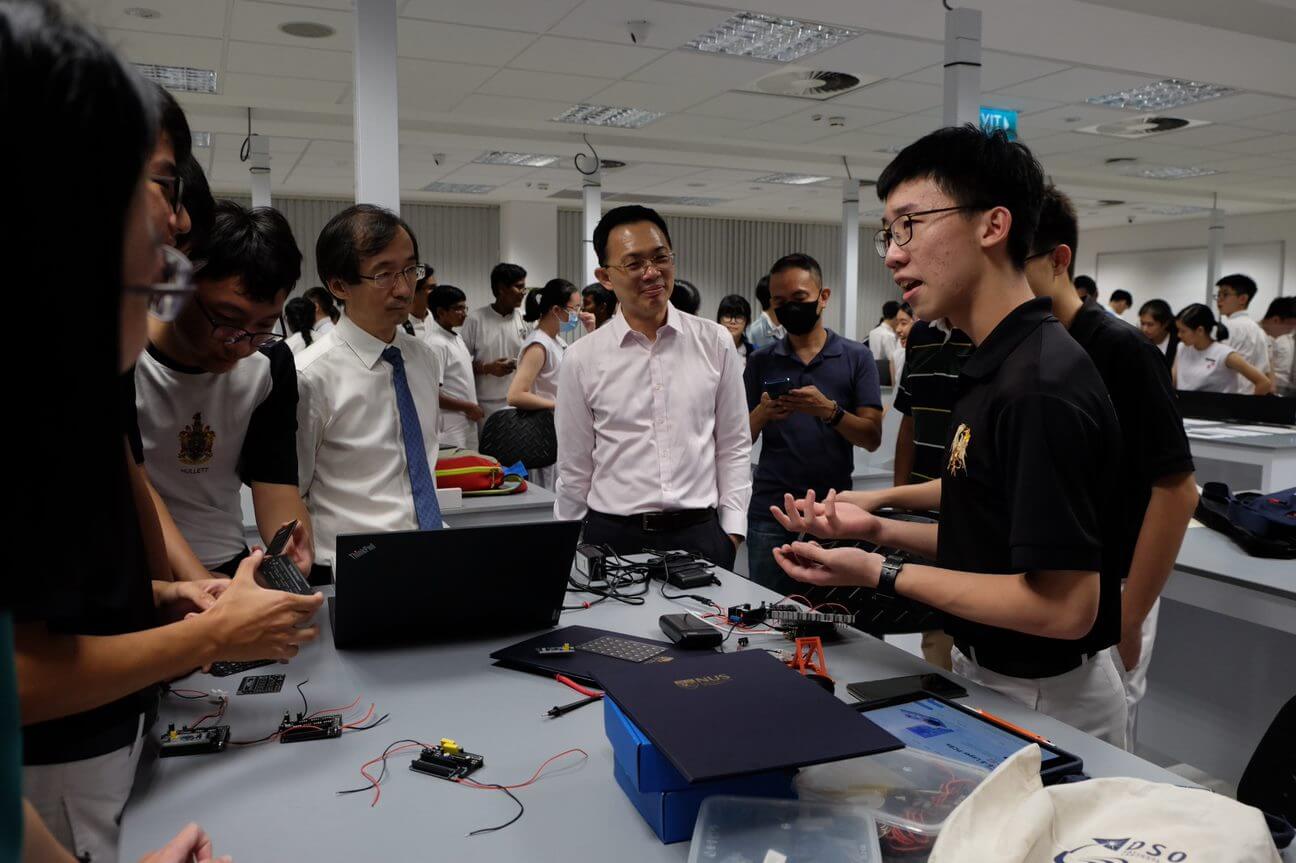
A classroom physics demonstration by their teacher on constructive and destructive interference of sound sent the first wave of excitement to Team Patchy Patches from Raffles Institution. They became inspired to pursue the idea of making sound directional. After viewing a video shown by their teacher on a similar topic, they decided to embark on a quest to generate high-frequency directional beam of sound.
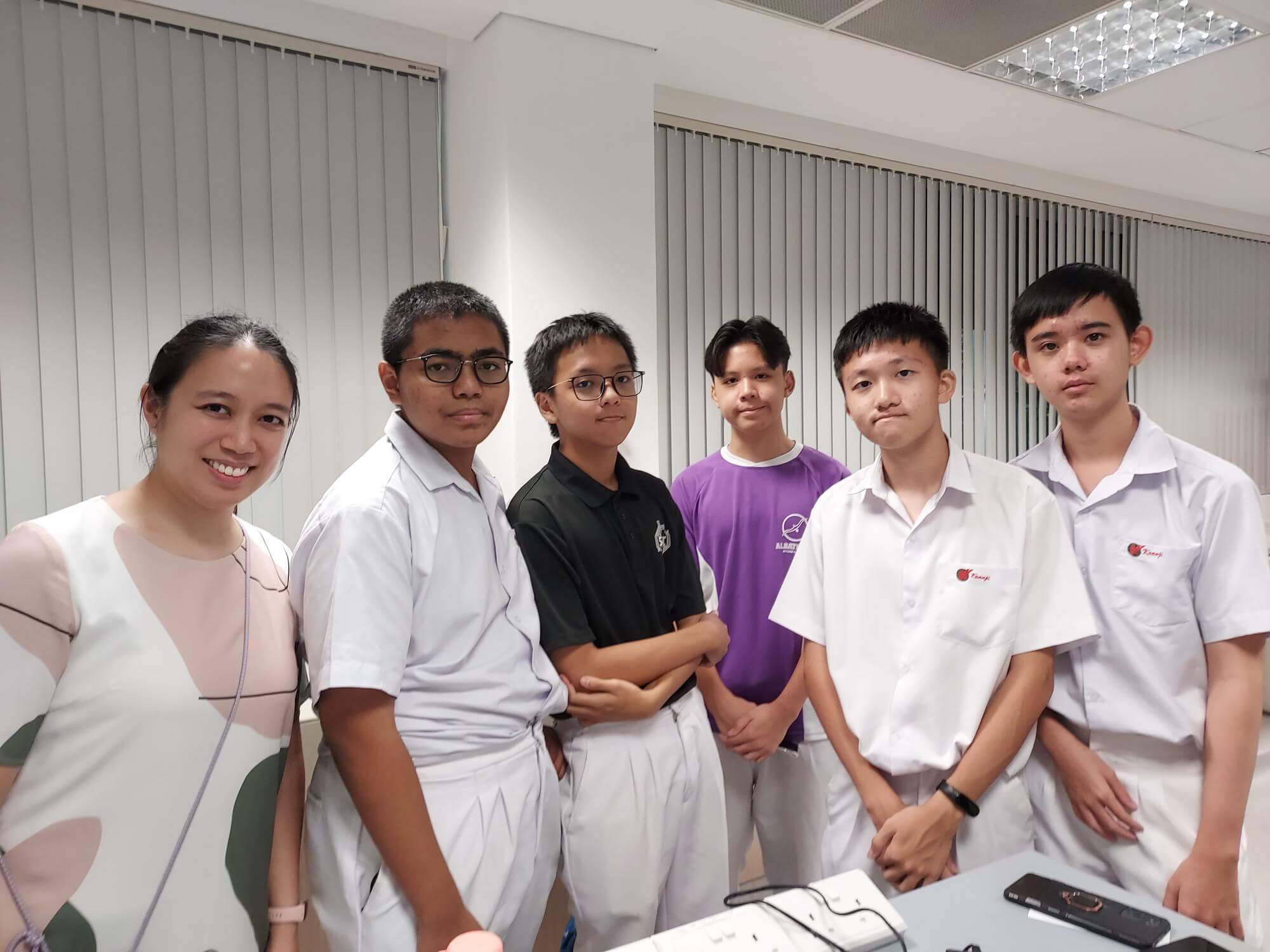
Then began their journey of researching the phenomenon online, searching for and modifying the schematics to get a phased array, adding time delay to speakers, designing the printed circuit boards, sending the boards for printing and self-discoveries of what worked and what did not. With perseverance, the team finally achieved what they have set out to do. “For some reason, there was no sound. We did a lot of trial and errors. We broke a few chips and boards but finally we realise by shorting, we could fix this problem,” recounted team members Ong Jiunn Xiang and Wang Yunze.
Kranji Secondary School teacher Ms Felicia Mah was upbeat about her students’ enthusiasm to share physics way beyond the syllabus which triggered their interest to do research. On the other hand, “Illustratum also tests students’ adaptability in switching project ideas to suit the competition. It challenges them on their time management as well and their willingness to put in effort needed to research on physics concepts beyond what they have learned. The students work a lot harder on their own,” said Ms Mah.
In his congratulatory message to students, Prof Gong Jiangbin, head of NUS Physics, emphasised the valuable lessons students could take away from the competition such as learning how to face challenges, collaborating effectively with their team members and learning from their mistakes as they experience science beyond the textbook by themselves.
Team Monday Blues from Bedok South Secondary School was not about to let any setbacks hold them back. Team members Thomas Lim and Louis Tani asserted, “This competition helps to deepen our knowledge. We have to learn a lot of new and in-depth topics that we probably would not learn in school. There were also a lot of challenges. Halfway, we had to change our entire project idea because it was not feasible as we did not have the materials and time to create the prototype. But we push through the next one as we work together as a team to create and learn a bunch of physics.”
Crystal Chng from Team Hydronus, Nanyang Girls’ High School, commented, “Our project has quite a lot of craftsmanship and my task is to do all the cardboard part. I have to draft the cardboard and cut them. I have to use toothpick to poke all the little holes. But I think the end was very rewarding.”
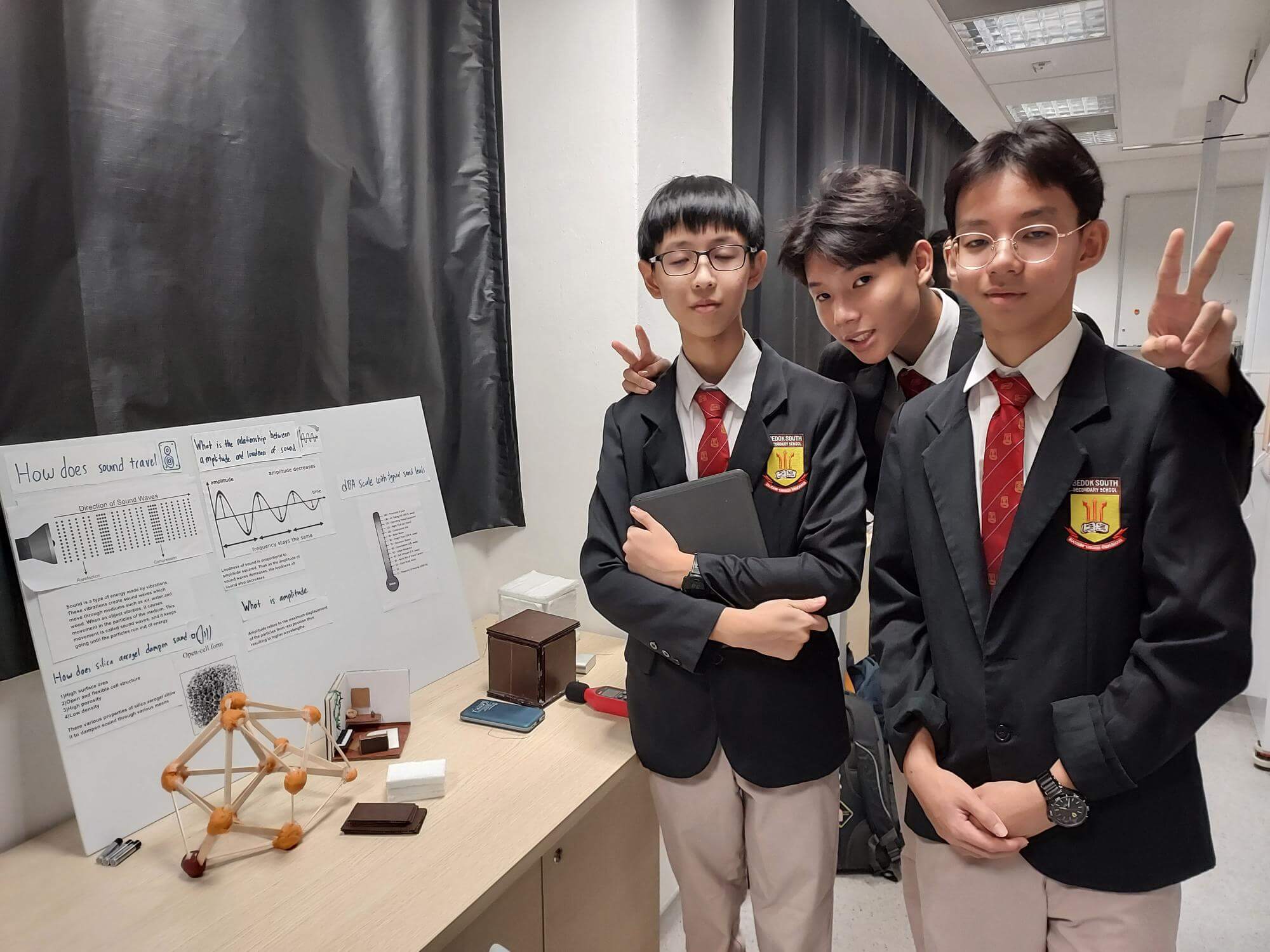
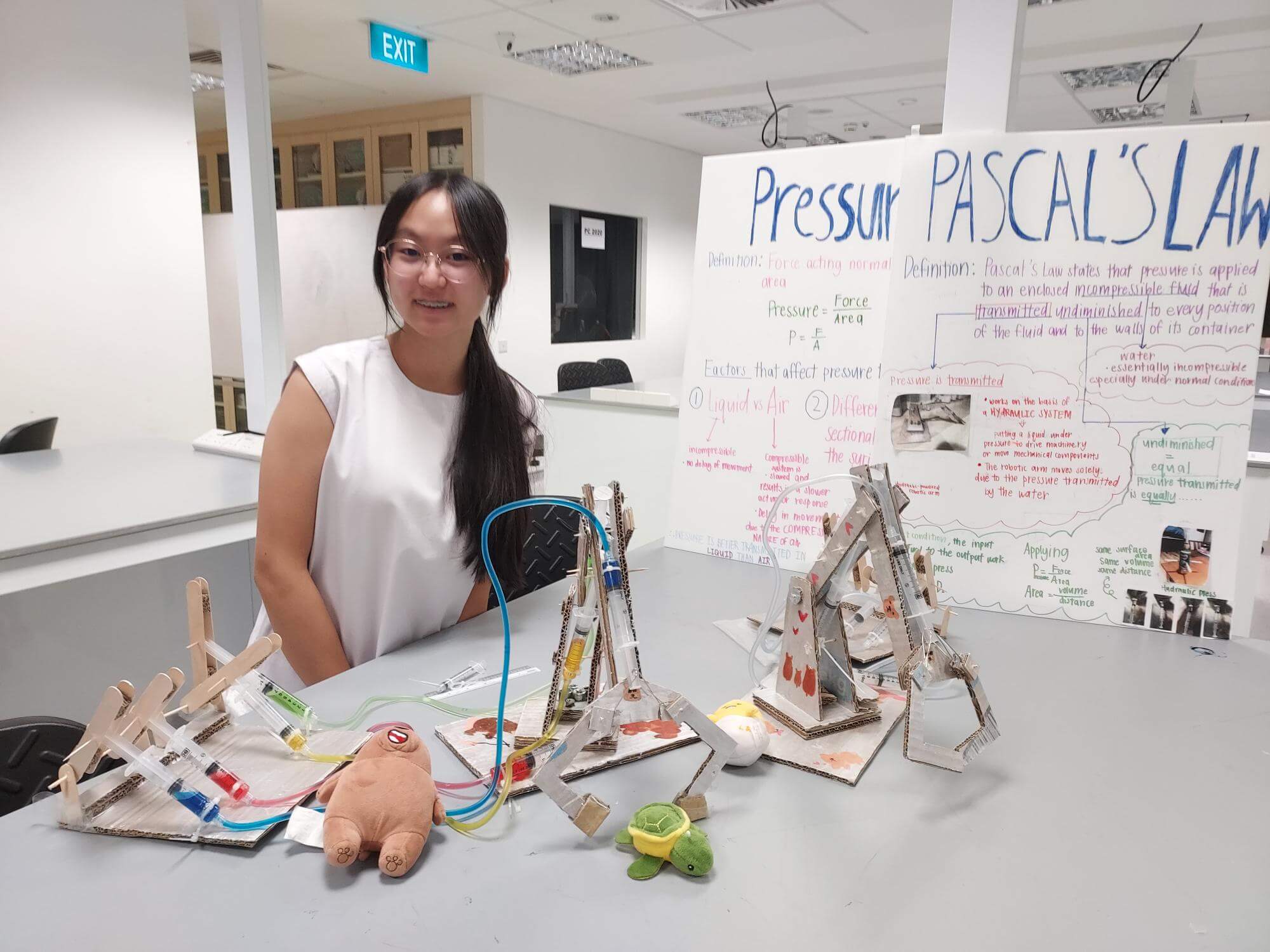
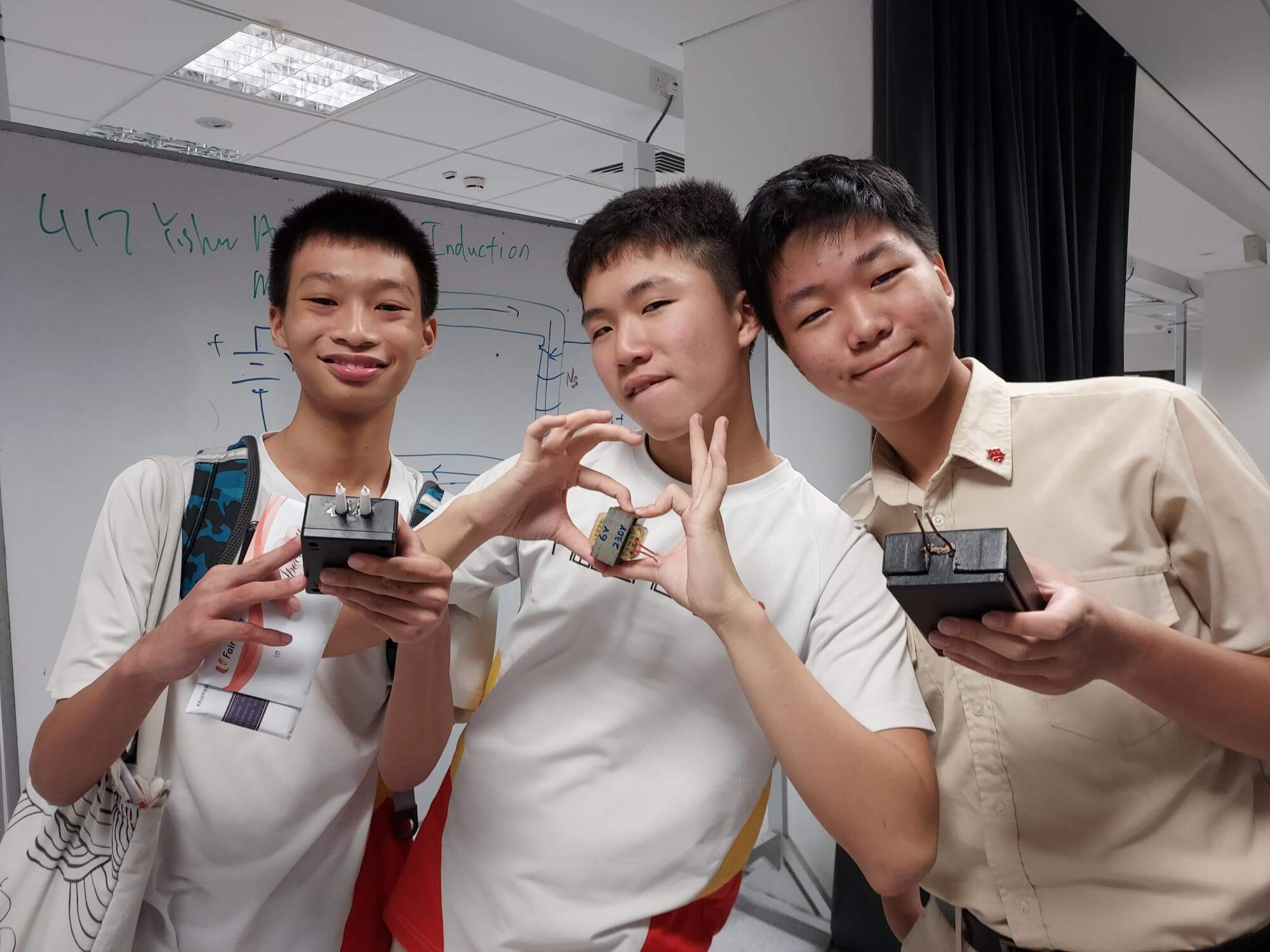
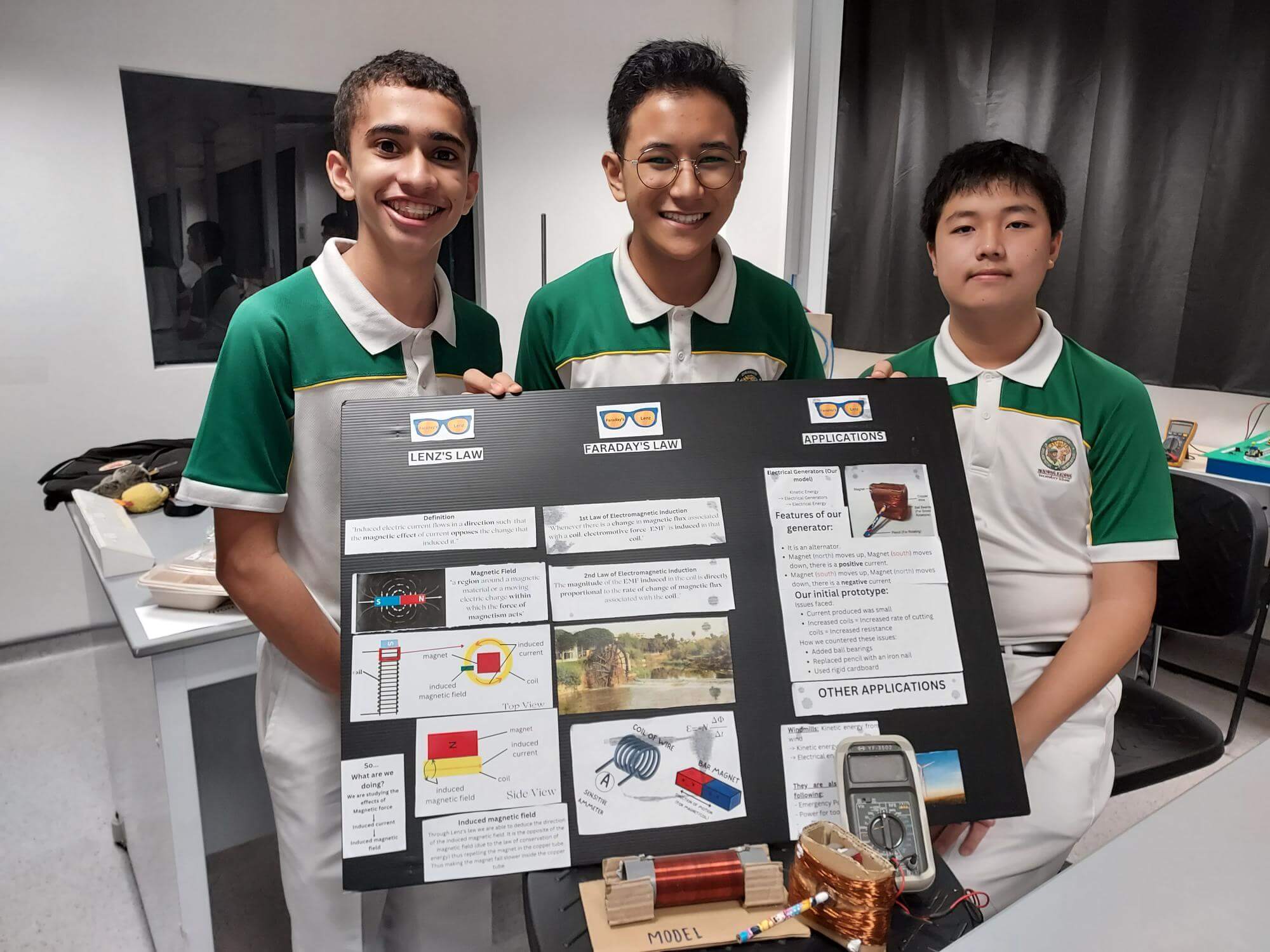
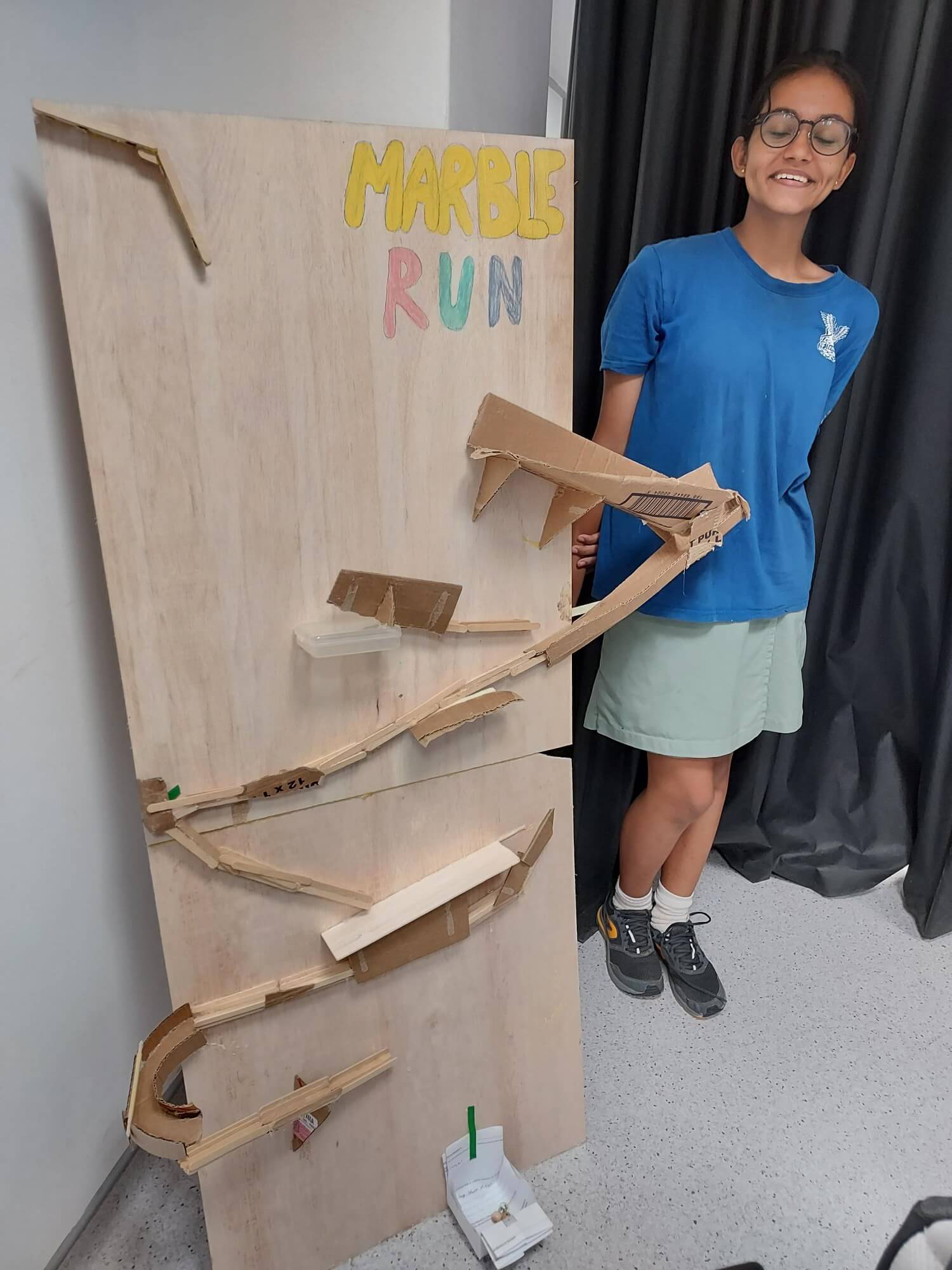
Having the element of fun is an important factor that contributed to Illustratum’s positive experience. “We thought about practical applications like step-down transformers and wireless phone chargers. We want to have a taste of (electric) shock. What inspires us to come here is to have fun and also get things done as we work. Moreover, here we can learn from other competitors,” quipped Team Jizzics from Hwa Chong Institution.
Sophia Curic from Team The Creators, NUS High School of Mathematics and Science, also enjoyed the experience. “We had a great time building our project. We ran into some problems, but we were able to get past them and we learn how to work together as a team. I found this experience really enjoyable. I was able to be more creative and experiment with things that I would normally not have the time to do,” said Sophia.
Mr Ong also expressed his appreciation to the teachers, mentors and parents who have guided and supported students in their journey. Certainly, Illustratum would not have been possible without the collective effort of community coming together to groom the next generation of physicists.
Team Faradays Lenz from Tanjong Katong Secondary School shared that they were more inclined towards learning physics having participated in Illustratum. They explored on a topic which has not been taught and felt they were able to learn a lot about it themselves. “This independent learning was really important in getting us interested in the topic because it became our intrinsic motivation which drove our curiosity. We tried to study Lenz’s law and Faraday’s law on our own. We create models that generate electricity and also explain how a magnet going through a copper tube is going to fall slowly. We manage to make an efficient model and we are happy with our final product,” elaborated team members Raval Vinay Rao and Muhammad Arish.
Indeed, we are already witnessing the emergence of young physicists, a promising outcome of Illustratum.
Subscribe to the NUS Physics Telegram @ https://t.me/NUSPHYS
